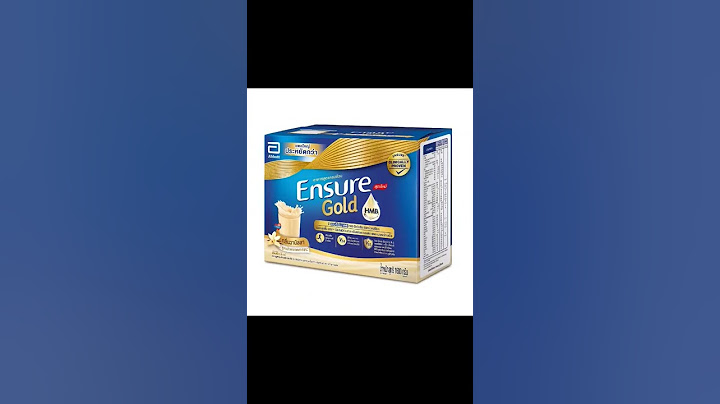Background: Regular intramuscular (i.m.) benzathine penicillin G (BPG) injections have been the cornerstone of rheumatic heart disease (RHD) secondary prophylaxis since the 1950s. Patient adherence to IM BPG is poor, largely due to pain, the need for regular injections every 3–4 weeks and health sector delivery challenges in resource-limited settings. There is an urgent need for new approaches for secondary prophylaxis, such as an implant which could provide sustained penicillin concentrations for more than 6 months. Methods: In this study we developed and evaluated a slow release implant with potential for substantially extended treatment. The side wall of a solid drug rich core was coated with polycaprolactone which acts as an impermeable barrier. The exposed surfaces at the ends of the implant defined the release surface area, and the in vitro release rate of drug was proportional to the exposed surface area across implants of differing diameter. The in vivo pharmacokinetics and tolerability of the implants were evaluated in a sheep model over 9 weeks after subcutaneous implantation. Results: The absolute release rates obtained for the poorly water-soluble benzathine salt were dependent on the exposed surface area demonstrating the impermeability of the wall of the implant. The implants were well-tolerated after subcutaneous implantation in a sheep model, without adverse effects at the implantation site. Gross structural integrity was maintained over the course of the study, with erosion limited to the dual-exposed ends. Steady release of penicillin G was observed over the 9 weeks and resulted in approximately constant plasma concentrations close to accepted target concentrations. Conclusion: In principle, a long acting BPG implant is feasible as an alternative to i.m. injections for secondary prophylaxis of RHD. However, large implant size is currently a significant impediment to clinical utility and acceptability. Show
Penicillin G benzathine injection is used to treat bacterial infections (eg, mild to moderate infections of the upper respiratory tract, syphilis, yaws, bejel, pinta). It is also used to prevent rheumatic fever, chorea, rheumatic heart disease, or acute glomerulonephritis. This medicine is an antibiotic. It works by killing bacteria or preventing their growth. This medicine is to be given only by or under the direct supervision of your doctor. This product is available in the following dosage forms:
Before UsingIn deciding to use a medicine, the risks of taking the medicine must be weighed against the good it will do. This is a decision you and your doctor will make. For this medicine, the following should be considered: AllergiesTell your doctor if you have ever had any unusual or allergic reaction to this medicine or any other medicines. Also tell your health care professional if you have any other types of allergies, such as to foods, dyes, preservatives, or animals. For non-prescription products, read the label or package ingredients carefully. PediatricAppropriate studies performed to date have not demonstrated pediatric-specific problems that would limit the usefulness of penicillin G benzathine injection in children. Safety and efficacy have been established. GeriatricAppropriate studies performed to date have not demonstrated geriatric-specific problems that would limit the usefulness of penicillin G benzathine injection in the elderly. However, elderly patients are more likely to have age-related liver, kidney, or heart problems, which may require caution and an adjustment in the dose for patients receiving this medicine. BreastfeedingThere are no adequate studies in women for determining infant risk when using this medication during breastfeeding. Weigh the potential benefits against the potential risks before taking this medication while breastfeeding. Drug InteractionsAlthough certain medicines should not be used together at all, in other cases two different medicines may be used together even if an interaction might occur. In these cases, your doctor may want to change the dose, or other precautions may be necessary. When you are receiving this medicine, it is especially important that your healthcare professional know if you are taking any of the medicines listed below. The following interactions have been selected on the basis of their potential significance and are not necessarily all-inclusive. Using this medicine with any of the following medicines is usually not recommended, but may be required in some cases. If both medicines are prescribed together, your doctor may change the dose or how often you use one or both of the medicines.
Other InteractionsCertain medicines should not be used at or around the time of eating food or eating certain types of food since interactions may occur. Using alcohol or tobacco with certain medicines may also cause interactions to occur. Discuss with your healthcare professional the use of your medicine with food, alcohol, or tobacco. Other Medical ProblemsThe presence of other medical problems may affect the use of this medicine. Make sure you tell your doctor if you have any other medical problems, especially:
Proper UseA nurse or other trained health professional will give you this medicine in a medical facility. It is given as a shot into one of your muscles, usually in the upper buttock or hip area. Missed DoseThis medicine needs to be given on a fixed schedule. If you miss a dose or forget to use your medicine, call your doctor or pharmacist for instructions. It is very important that your doctor check your or your child's progress closely while receiving the medicine to make sure this medicine is working properly. Blood tests may be needed to check for unwanted effects. This medicine may cause a serious allergic reaction, called anaphylaxis, which can be life-threatening and requires immediate medical attention. Tell your doctor right away if you or your child has a rash, itching, hoarseness, trouble breathing, trouble swallowing, or any swelling of your hands, face, or mouth after receiving this medicine. This medicine may cause serious skin reactions, including Stevens-Johnson syndrome, toxic epidermal necrolysis, drug reaction with eosinophilia and systemic symptoms (DRESS), or acute generalized exanthematous pustulosis (AGEP). Check with your doctor right away if you or your child has black, tarry stools, blistering, peeling, loosening of the skin, chest pain, chills, cough, diarrhea, fever, itching, joint or muscle pain, painful or difficult urination, red irritated eyes, red skin lesions, often with a purple center, sore throat, sores, ulcers, or white spots in them mouth or on the lips, swollen glands, trouble breathing, unusual bleeding or bruising, or unusual tiredness or weakness. Call your doctor if your symptoms do not improve or get worse. This medicine may cause diarrhea, and in some cases it can be severe. It may occur 2 months or more after you stop receiving this medicine. Do not take any medicine to treat diarrhea without first checking with your doctor. Diarrhea medicines may make the diarrhea worse or make it last longer. If you have any questions about this or if mild diarrhea continues, or gets worse, check with your doctor. Do not take other medicines unless they have been discussed with your doctor. This includes prescription or nonprescription (over-the-counter [OTC]) medicines and herbal or vitamin supplements. Side EffectsAlong with its needed effects, a medicine may cause some unwanted effects. Although not all of these side effects may occur, if they do occur they may need medical attention. Check with your doctor or nurse immediately if any of the following side effects occur: Incidence not known
Some side effects may occur that usually do not need medical attention. These side effects may go away during treatment as your body adjusts to the medicine. Also, your health care professional may be able to tell you about ways to prevent or reduce some of these side effects. Check with your health care professional if any of the following side effects continue or are bothersome or if you have any questions about them: Incidence not known
Other side effects not listed may also occur in some patients. If you notice any other effects, check with your healthcare professional. Call your doctor for medical advice about side effects. You may report side effects to the FDA at 1-800-FDA-1088. Portions of this document last updated: April 01, 2023 Original article: https://www.mayoclinic.org/drugs-supplements/penicillin-g-benzathine-intramuscular-route/precautions/drg-20506360 Benzathine penicillin G ฉีดยังไงBenzathine penicillin G 2.4 ล้านยูนิต ฉีดเข้ากล้ามเนื้อสัปดาห์ละ 1 ครั้ง นาน 3 สัปดาห์ติดต่อกัน (ให้แบ่งฉีดเข้ากล้ามเนื้อสะโพกข้างละ 1.2 ล้านยูนิต) ให้การรักษาคู่เพศสัมพันธ์หากมีผลเลือดผิดปกติ Benzathine penicillin G รักษาโรคอะไรBenzathine Penicillin G เป็นยาฉีดหนึ่งจัดอยู่ในกลุ่มยาปฏิชีวนะใช้ในการรักษาโรคซิฟิลิส ที่สามารถรักษาซิฟิลิส ให้หายขาดได้ โดยรูปแบบยาที่ใช้ในการรักษามีหลากหลายบริษัทยา การฉีดยา Benzathine Penicillin G 2.4. ฉีดยาซิฟิลิส เจ็บมากไหมฉีดแล้วเจ็บมาก น้ำตาจะไหล Syphilis คลอดทางช่องคลอดได้ไหมโรคซิฟิลิส (Syphilis) เกิดจากเชื้อแบคทีเรีย Treponema Polidum เกิดได้ที่บริเวณช่องคลอด ทวารหนัก และปาก หากไม่รับการรักษาที่ถูกต้อง อาจเกิดภาวะแทรกซ้อนจากการติดเชื้อ ส่งผลต่อระบบประสาท หัวใจ สมอง ระบบต่างๆ ของร่างกาย และอาจรุนแรงถึงขั้นเสียชีวิต |

กระทู้ที่เกี่ยวข้อง
การโฆษณา
ข่าวล่าสุด
2024 Fate stay night unlimited blade works ทำไม archer รอด
4 เดือนs ที่ผ่านมา . โดย LaboriousCondominiumผู้มีส่วนร่วม
การโฆษณา
ผู้มีอำนาจ
การโฆษณา
ถูกกฎหมาย
ช่วย

ลิขสิทธิ์ © 2024 th.ketiadaan Inc.




























